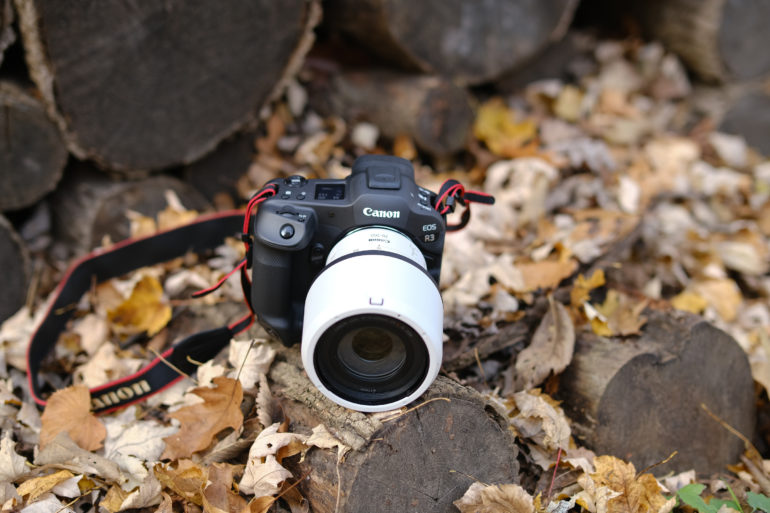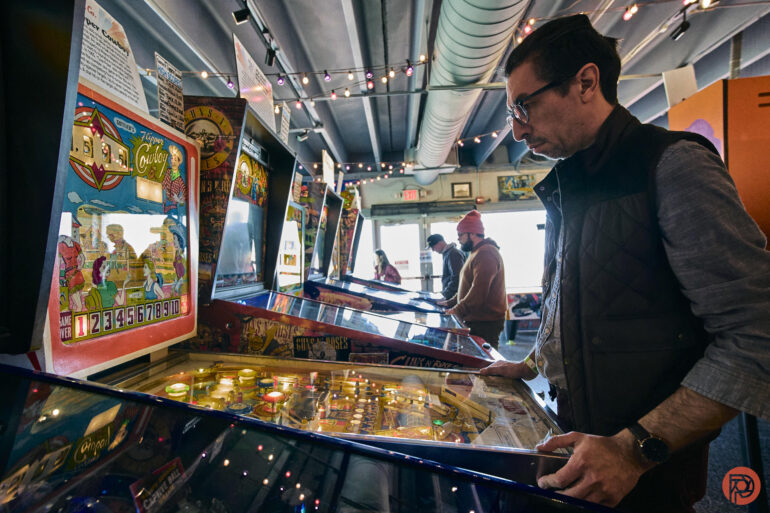
Spread the love
Canon and Sony cameras have their own fan followings. While Sony was the first to enter the mirrorless scene, it certainly has had the upper hand in crafting the best cameras. Canon may have come late to the scene, but the company worked tirelessly to get where it is today. With each having a distinct flagship full-frame camera, we have decided to let them battle it off in this article. Let’s see which one wins this round.
Autofocus
Canon R3 is spectacular when it comes to focus. The camera can detect people even at -7.5 EV, works well with 30 fps burst speed, and can focus quickly and accurately for portraits shot in the dark. In fact, you can detect people’s faces even when it’s really dark, which is impressive. As for animals, it does the same, no matter how small the animal is, and in some cases works on insects too. Like the image above. Additions such as people priority autofocus, and the Eye Control AF can also move the autofocus point to where your eye is looking. Overall, the device can do a lot, but it can’t focus on people of color in low light.

The Sony A9 III needs your assistance with little birds, especially when they are camouflaged. The same goes for street photography. At the same time, it can not focus on people of color in low light. However, if you are shooting in other environments, the camera can do wonders. The autofocus is fast, and you get the desired results.
Specs:
- The Canon R3 has 1,053 AF points and can track people, animals, select cars, and motorcycles down to EV -7.5.
- Sony A9 III has 759 AF points and real-time eye autofocus, even with 120fps. There is also Human, Animal, Bird, Insect, Car, Train, Airplane tracking, and Fast Hybrid AF.
Image Quality and High ISO

The Canon R3 offers excellent colors, even when you are shooting at high ISOs. The image above was shot at ISO 800 in the dark. But after editing and brightening it by about three stops, it looks nice. When we shot one with a flash, the only difference was contrast. In addition, images shot at up to ISO 12,800 can be printed large. Images are usable up to 51,200, but they lose some sharpness.

The A9 III gets a lot of things right. The image does not need too much editing. The skin tones are great, and the RAW file versatility is quite good. The image above was shot at ISO 6400, and despite that, the dynamic range is quite excellent. While images at high ISO are not grain-free, they are usable. If you want to use the camera specifically for online images, then Adobe Lightroom is the best bet, and it can use the AI noise reducer to get cleaner images at ISO up to 12,800. And it works better if you overexpose your images by 1/3 to 1/2 of a stop.
Specs:
- Canon R3 has an ISO up to 204,800 and a burst rate of 30fps.
- Sony A9 III’s ISO goes up to 51,200, and it has a continuous shooting rate of 12 fps
Build/Ergonomics

The Canon R3 is large and features a built-in battery grip. Despite that, it is comfortable, and the button placement is great, too. The camera gains an extra screen at the top, which is also a great addition. The camera also feels sturdy in your hands, and when tested with a glass of water, the device performed well. Wildlife photographers or outdoor photographers will not be disappointed in a challenging situation. The shutter also comes down to protect the sensor during lens changes.
The Sony A9 III has dials for control and optional locks. The buttons don’t feel cheap, and the overall experience of using the device has been quite pleasant, too. This is also the company’s most weather-resistant camera yet; as seen above, it can withstand rain pretty well. Since it has a global shutter, one can sync their flash normally at any setting. This is amazing for people who work creatively and want distinct images.
Specs:
- The Canon R3 has a 5.76M-dot EVF that can shoot 120fps blackout-free. It also has 5-axis image stabilisation and a 3.2-inch 4.15M-dot LCD. Its highest shutter speed is 1/64,000.
- The A9 III has a 9.43M-dot EVF with a 120 fps refresh rate at the highest quality or 240 fps with reduced quality. It also has 5-axis image stabilisation and a 2.09M-dot LCD. The highest shutter speed is 1/80,000.
Conclusion
The Canon R3 costs under $4500, while the Sony A9 III is just under $6,500. Both cameras produce exceptional images, have great ISO performance, and are weather sealed. However, over the longer term, the R3 started giving us challenges, and so, we had to remove its five stars and Editor’s Choice Award, both of which remain intact for the A9 III. If you are into wildlife and low-light photography, the R3 is a better bet for you. But if you are into sports, weddings, photojournalism, or any other genre that requires higher dependence on speed and light, then the A9 III is for you.
The more important thing about this comparison is the fact that the Sony a9 III has a global shutter. So with the right settings, flash usage will deliver performance that isn’t possible with any other camera out there.

